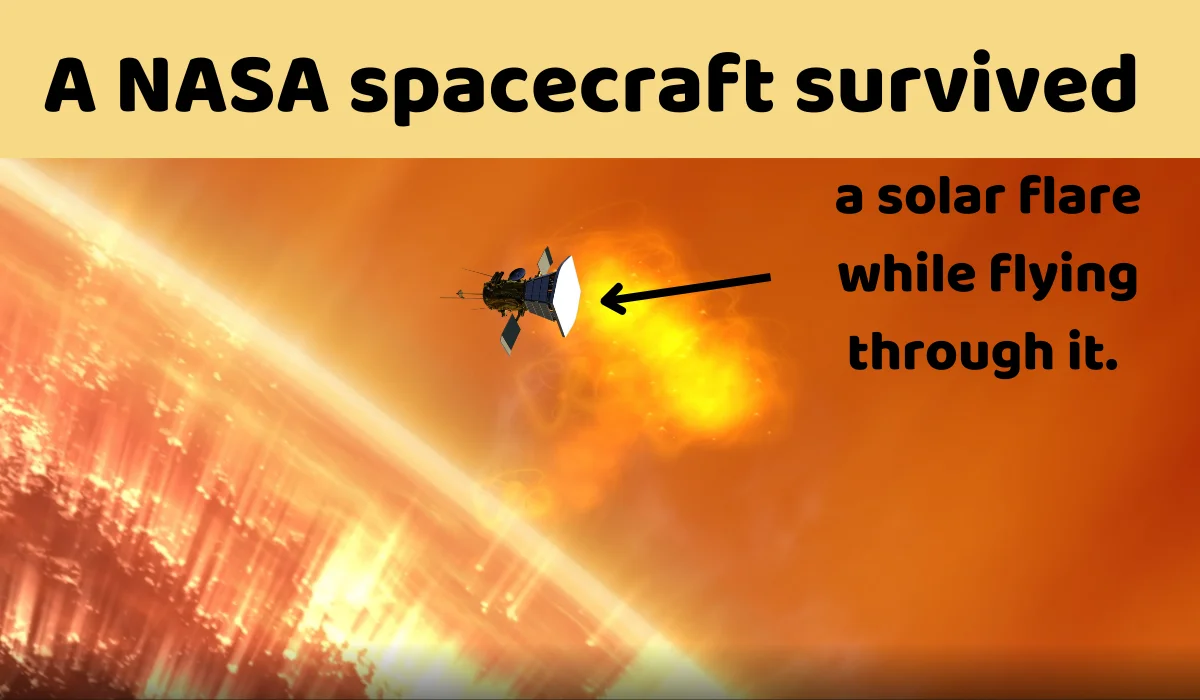A NASA spacecraft survived a solar flare
The space agency’s Parker spacecraft, which was the first mission to ever “touch the sun” and the fastest thing ever created by humans, passed through a coronal mass ejection (CME), a violent solar explosion.
According to research published in The Astrophysical Journal, the probe remotely spotted the CME before skirting around it, entering the structure, and eventually leaving through the opposite side.
The probe approached the solar surface at a distance of 9.2 million kilometers (5.7 million miles), which is closer than Mercury has ever been to the Sun.
With speeds ranging from 60 to 1,900 miles per second and billions of tons of charged particles being released, solar flares can be deadly if they are pointed toward Earth.
Strong CMEs, for instance, have the capacity to destroy ground-based electrical networks and satellite electronics as well as change the magnetic field of the planet and produce stunning auroras.
Nour Raouafi, a Parker project scientist at Johns Hopkins University, stated: “This class of event, huge and extremely fast CMEs, can do catastrophic harm.
“We have never seen a CME this close to the Sun. We have never witnessed an event of this size from this far away.
The CME took place in September 2022, despite the fact that the research was published earlier this month.
The Johns Hopkins Lab reported that Parker was the first spacecraft to ever fly through a strong solar explosion close to the sun. Parker spent around two days observing the CME in all.
The probe discovered that certain particles were accelerating up to 1,350 km/h (840 mph) as they passed behind the shockwave of the CME.
Dr. Raouafi speculates that if such a flare had been aimed at Earth, it may have been similar in size to the Carrington Event, a solar storm that occurred in 1859.
The Parker probe, on the other hand, was equipped with heat shields, radiators, and a thermal protection system to guarantee that its temperatures remained constant.
By contrasting the measurements made by the probe inside the CME with those made outside of it, scientists are currently trying to piece together how the event transpired.
Orlando Romeo, the study’s principal author from the University of California, Berkeley, said, “You try basic models to explain specific features of the event, but when you are this close to the sun, none of these models can explain everything.
“We’re still not exactly sure what is happening there or how to connect it,” Dr. Romeo stated.
As the Sun approaches its solar maximum, a peak in its 11-year activity cycle that is projected for 2025, and the spacecraft’s next solar flyby is scheduled to take place on September 27, researchers said the probe is likely to witness more such huge CMEs.

